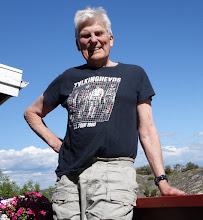So today, November 29, 2017, I begin a post titled Even In America to report that I have discovered that Even in America there is a company that provides advanced technology like the technology I often report on from my Swedish perspective.
Waste to Energy Technology
Waste to energy technology is used to heat most Swedish cities through the "fjärrvärme" system or distance-heating system, referred to in the US as district heating.. My Swedish city, Linköping, was the pioneer in providing such a system with a start back in the 1950s. We have here in Linköping at the Gärstad Plant what I have referred to often and recently as the world's most advanced system. You can see the Gärstad plant by clicking on my May 2017 post in the list at left.
But a few days ago thanks to quartz.com I discovered that a facility is being built in Denmark that may be even more advanced than Gärstad. Here is a picture of the CopenHill plant built by the Danish Company Babcock and Wilcox.
Discovery of that plant led to another discovery, that Danish Babcock and Wilcox is constructing a similar plant in West Palm Beach, Florida. Will be adding photos ASAP - this note 12/28/17.
Even In America






